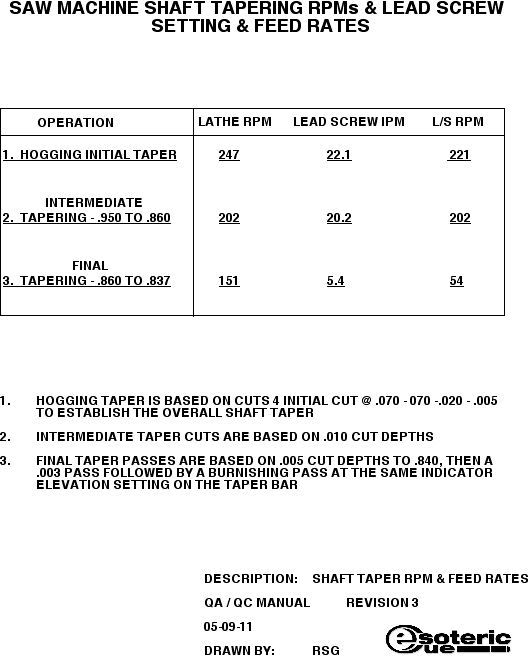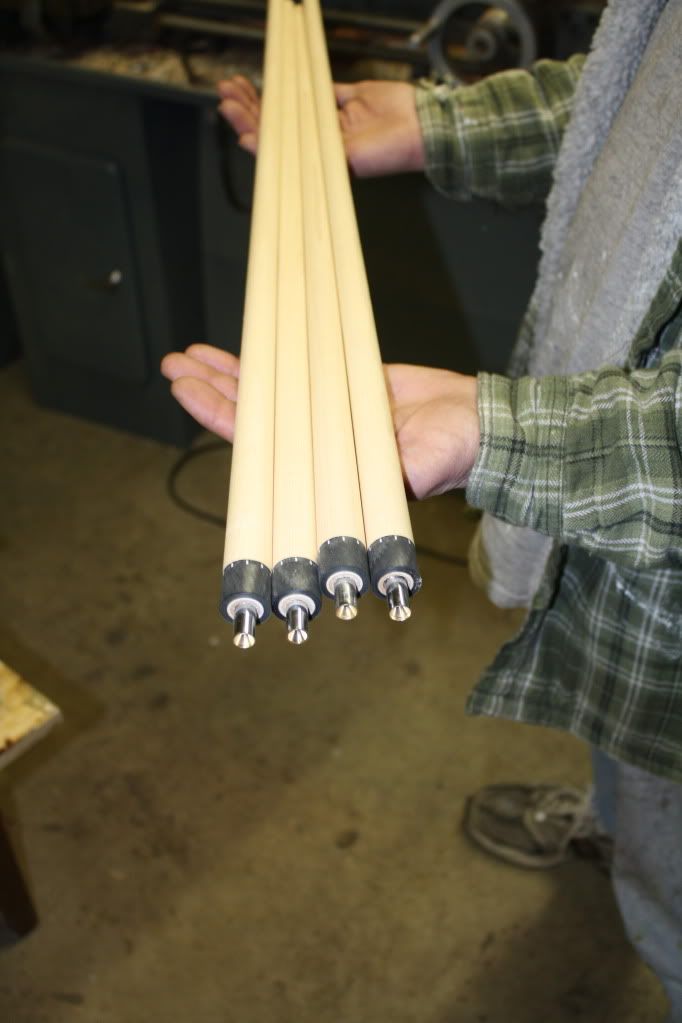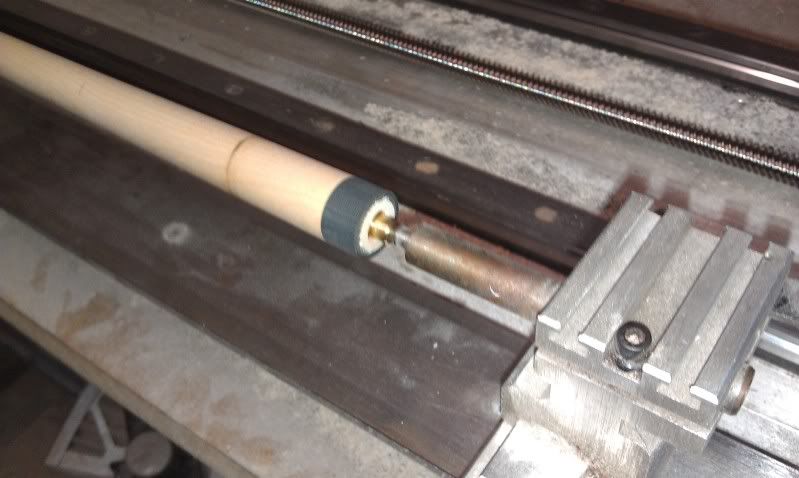I was wondering, I know different guys have different ideas of what the proper turning schedule should be.
If you do not mind sharing, what is your turning schedule? How much time between turns, How many turns before the shaft is down to finish size? what is your reasoning?
My guess is there are many different schedules that cuemakers endorse.
If you do not want to make your answer public but do not mind sharing with me, I would gladly take a PM on the subject.
I make two or three aggressive cuts about a month apart to get the shaft down to about 16-18mm. Then start taking small passes down to 13.25. I sand down from there.
Alternatives??? Always looking to improve!
Hi Neil,
This is the way we do it. My shop is in the midwest and we have seasonal changes in our environment with the 4 seasons. And we like to age our wood like
Ernie from "Gina Cue" who has over 10 years of aging in his shaft stock at any time. My thinking is, do what the
"Master of the Cue Universe" is doing and it can't be wrong.
Here is our schedule for seasoning and building our shafts:
I take my hand picked 5/4" Kiln Dried Planks to shop & acclimate for 1 to 2 weeks and check with moisture meter. (
I have a small piece of 5/4" plank cut off in my shop which represents the moisture standard of maple at any given time in any given season. When the new stock and that standard moisture datum piece match, the plank is ready to be cut).
Bandsaw 5/4" planks to 5/4" squares at 30"
Dowel to 1"
Initial Taper established in 4 passes to
.950
To
.925 at some point, then weighed and marked with a pencil.
(Store in the caddy until being matched for color and weight for a cue. At this point in our shop inventory, the shafts are 4 years old or older and we are shooting for ten in the next six years as I am buying only a few new freak planks at a time every month or two at this time).
The inserts are then installed into the shafts and the rings and collars are also installed and we tap the threads and install our pin turning device for concentricity. The shaft is never chucked again and the pin device is not removed until we have performed the final buffing of the finish.
During the build I take a
.010 intermediate passes on the saw machine every other day then lighters cuts to final, ( see chart below).
At
.845 I seal with a white waterborne sealer for a grain raise and then cut to final. This sealer makes the wood harder on the surface and gives me a better RMS finish on the final cuts at the snail slow speeds and feeds. You can hear the difference of the higher pitch of the saw on the wood and feel the difference with your hand at final. It works great!!!
All shafts are then sanded and sealed with shellac until clear coating is buffed and shafts are finished sanded and burnished, then the pin device is removed.
I know many here disagree with my method for shaft building using my centering pin device and have their own way of getting their repeatable results and that's ok. Do what works for you.
For processing shaft wood I follow the lead of
David P. Kersenbroch as described in his book of 1990. Other than the fact that I take more cuts over time ( just me being annal) I am a DPK groupie. He is another
"Master of the Cue Universe" in my book and if you emulate what the best in the business does and build on their path to success, with a few incremental refinements that you can learn and make for improvement, who knows where it may take you.
One Last Thought:
IMHO, the shaft of your cue is the most important feature element concerning the way your cue hits. Your taper and the density of the wood is paramount if you want a world class hit to all of your cue. I reject all shafts under 3.9 oz and I know what that shaft is going to weigh pretty much at .925. This can be achieved by hand selecting your planks and buy the heaviest one with the straightest grain.
If my shafts have some color imperfections or a mineral spot here or there, I don't care or feel funny about it at all because the "Hit" is what I am after. If a customer gives me the inquiring eye about a mark on a shaft, I put in on the scale and ask him if he wants that 4.4 oz shaft or does he want to pick out another cue with a prettier shaft pair. When it goes to the scale, they always want it.
Everybody has their own bend to the brim concerning shaft processing. This is just the way I do it.
Rick Geschrey
Shaft turning schedule procedure with feed and speeds
4 sanded shafts ready for shellac with concentricity turning pins.


